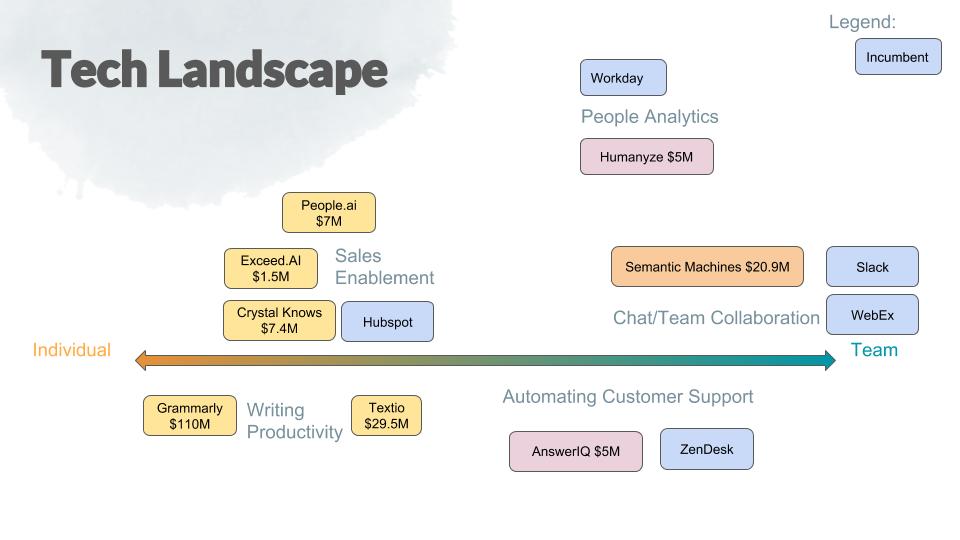The State of technologies pushing Emotional EQ

If you are non-native English speaker like me, you remember the days when you had to use an online dictionary. You would look up a word, then another — until you translated the whole sentence. This was also the case with translating emails and web pages from other languages into English.
Then, in 2006, Google launched its Translate Service. Suddenly, it was possible to translate whole sentences and even pages. The result was not perfect, but it made online dictionary services obsolete almost overnight. A few dictionary services remained popular for complex languages (Chinese Mandarin, Russian, Hebrew…), and even those are quickly losing relevance.
Twelve years later, there is another revolution brewing in the language space: Interpretation of Emotions. And it is super important! Consider just how interconnected different cultures are today in the digital world. Yes, you can translate email messages word for word, or phrase for phrase, but can you really understand the real opinions and undertones of people behind them? How do you read emotions of someone located far away? How do you tell what someone is feeling if her written or spoken English is not perfect?
What is Emotional EQ?
Emotional AI/EQ is a broad field of methods aimed at automating objective measurement of opinions, feelings, and behaviors. It relies on natural language processing (NLP) & understanding (NLU) and psychology to extract the relevant information on human opinions and feelings. Increasingly, it involves face- and voice-recognition technologies to analyze tone facial expressions of the speaker.
The list of applications is vast. Consider the simplest text analysis that extracts emotional signals such as: Negative Aggressive Exciting
A more advanced application would make high-level recommendations about how to make a sentence or paragraph more positive or sincere. A yet more advanced application could suggest specifics on how to rewrite the text altogether to achieve a specific goal. Of course, emotional understanding is not achieved by merely making every message sound positive. Context is important. Future applications will provide value in understanding not only through extraction of emotional signals, but also through extraction of signals within the context of a particular conversation, a transaction, or a relationship.
What technologies exist within Emotional AI?
Before diving into specific applications, it is important to separate this technology landscape into two categories:
- API services - commodity backend resources aimed at basic classification (aka “sentiment analysis” tech)
- Context-aware frontend services (value-add applications)

Leading NLP API providers such as Google and IBM only provide the basic general-purpose building blocks which developers can compare on accuracy, price, and scalability. While this tooling may be helpful as a baseline, it is unlikely to produce significant value in any specific use case. Expecting their current offerings to be universally applicable is akin to expecting average temperature across a hospital to be useful in diagnosing the state of health for a particular patient. For that, these giants need end-user applications.
Context-aware applications, on the other hand, not only predefine the use cases but also introduce relevant historical context: who, what, when, why. This is really where the bulk of new innovation is starting to happen. It is still a very nascent space though.
Client/context-aware applications can be further distilled into categories according to the use case. Writing Productivity is the most common. Grammarly and Google Translate fall into this category. There are others though, including:

Each of the five categories has a tech-capable billion-dollar market leader that is unlikely to disappear. Assuming these companies are here to stay, how should VCs evaluate new technologies across these categories? One way is to look at what kind of start-ups will each of the above companies acquire to strengthen its dominant position. Typically this will come from complementary value in one of these two:
- core technology IP (Support, Sales, Chat/Collaboration)
- customer acquisition (Surveys, People Analytics/Coaching)
And this can already be seen from the types of acquisitions ZenDesk, Hubspot, and Slack have been making: tech-heavy with unimpressive client base. On the other hand, both Workday and SurveyMonkey have been acquiring more mature teams — with an existing process for new client acquisition.
In the first category, acquisitions are only starting to happen, so it is early to say which technologies will prove to stick around. Most recently Semantic Machines was acquired by Microsoft in the Chat/Team Collaboration space. Some other start-ups in the space are Crystal Knows (Sales Enablement, raised $7.4M in Series B), Exceed.ai (Sales Enablement, raised $1.5M in Seed), AnswerIQ (Customer Support, raised $5M in Series A). Each of these focuses very narrowly on its particular category.
What remains to be seen is whether we will see a company that will find a way to offer value across several of these categories. This is really how a new dominant company might come to life. Google, AWS, IBM do offer this capability indirectly but today they are not context-aware. One bet is that a start-up with strong position in one of the categories can with time dominate other categories as well. Maybe the flood of investments into writing productivity applications is backed by this assumption. However such financing is troublesome, and maybe unsustainable. There is currently no billion-dollar company with monetization based on writing productivity. Google Translate is a free service.
My own bet is that a new dominant context-aware application in Emotional EQ space will come from where we least expect it. But to draw any premature conclusions, we would have to analyze target markets–not applications. More on that later…
